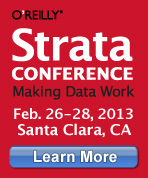Recently, the Wall Street Journal published an article discussing the explosion of tax-identity theft, which has ballooned to 1.1 million cases in 2011 from 51,700 in 2008. The Wall Street Journal mentioned that the Treasury Inspector General for Tax Administration reported an additional 1.5 million potentially fraudulent 2011 tax refunds totaling in excess of $5.2 billion.
What is the cause of this? Taxpayers now have the option to file their taxes online and receive their refunds directly deposited into bank accounts, and this tax filing method creates all kinds of opportunities for electronic fraud.
How does this affect you? Fraudsters who have certain pieces of your data can file a tax return under your identity and receive your refund. Fraudsters look for “at-risk” identities that they can use in scale to scam refunds out of the IRS. “At risk” identities include deceased identities, identities of minors, and legitimate citizens. Fraudsters only need a valid name and social security number combination. How much time, effort and money do you think it would take you to convince the IRS that a fraudster stole your identity, filed your taxes and received your refund? Even though this trend is on the rise and the government has seen it, the onus would still be on you, to prove that you were defrauded.
You can take actions to safeguard yourself — such as filing for your tax refund as early as possible — but in addition, you can take control of your identity and make sure your electronic footprint works for you. This is a situation where more data about you actually helps to defend against fraudsters posing as you since the more accurate data you have out there, the more difficult it is to create fake data on you. Here are some simple steps you can take to protect yourself:
- File tax returns as early as possible.
- When you move, change your address at the post office and forward your mail immediately so that you don’t miss any bills, credit card statements, etc.
- Keep tabs on your credit score.
- Keep your contact information and registrations current on vehicles such as cars, boats, trucks.
- Keep your contact information current with financial institutions so that your mortgage, bank accounts, student loans, always reflect your current address.
- Keep your contact information current at your employer.
- Diligently manage your social media presence — make sure any social media accounts (Facebook, LinkedIn, GooglePlus) that are out there under your name are actually yours. Fraudsters can swipe your name and photo and create an account under your name and start to “friend” your real friends. Google yourself and see what comes up.
Some your of data is considered public record. This information is generally found at a courthouse and includes things such as marriage licenses, vehicle registrations, and property records. Public records, along with other data, can be leveraged to authenticate identity. A strong, accurate public record data footprint can help prove an authentic identity and help determine when there are fraudulent attempts to use your identity, as well as detect new information additions dissonant with your established identity data narrative.
When it comes to tax refund requests remember this one simple fact: it is first come first served. File early and limit the window of opportunity for the scam artists!
If you want to learn more about some of the shockingly innovative ways that fraudsters are able to crowdsource large scale identity theft and how LexisNexis Risk Solutions leverages its data, analytics and Big Data processing platform (HPCC Systems) to help government and industry fight fraud schemes, then join me at Strata in Santa Clara to hear a presentation called “How to Crowdsource Large Scale Identity Theft and Fraud to Make Bucket Loads of Easy Money.”
Or contact me at jo.prichard@lexisnexis.com.
 Strata Conference Santa Clara — Strata Conference Santa Clara, being held Feb. 26-28, 2013 in California, gives you the skills, tools, and technologies you need to make data work today. Learn more
Strata Conference Santa Clara — Strata Conference Santa Clara, being held Feb. 26-28, 2013 in California, gives you the skills, tools, and technologies you need to make data work today. Learn more
